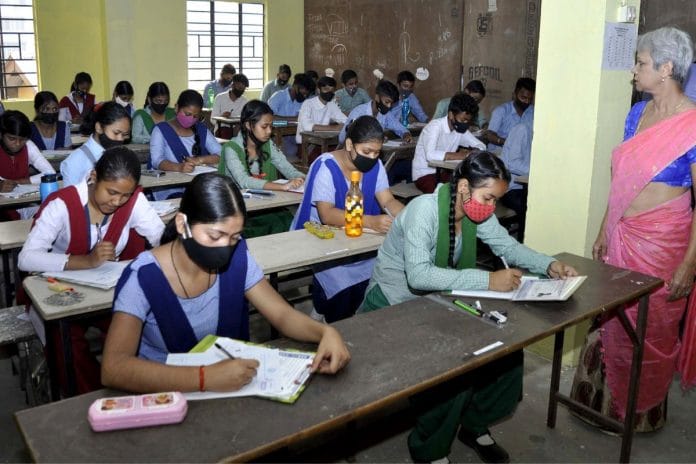New Delhi: In 2022, Madhya Pradesh had a pass percentage of 61 percent in the Class 10 state board exams, while the figure for Punjab was 97.8 percent, says a report compiled by the Ministry of Education.
The report also points out differences among pass percentages at the Class 12 board level in various states. While Punjab was again at the top with a pass percentage of 97.2, Madhya Pradesh had a pass percentage of 78 percent for its Class 12 students.
These differences have led the education ministry to now look at standardising the assessment pattern for all 60 school boards across states, school education secretary Sanjay Kumar told the press Tuesday.
Currently, there are three central boards in India – the Central Board of Secondary Education (CBSE), the Council for the Indian School Certificate Examinations (CISCE) and the National Institute of Open Schooling (NIOS). Apart from these, various states have their own state boards, taking the total number of school boards to 60.
The report, quoted above, analyses the Class 10 and 12 results for the state boards of Andhra Pradesh, Assam, Karnataka, Kerala, Manipur, Odisha, West Bengal and Telangana, as well as Madhya Pradesh and Punjab, to understand the variations in results for different state boards.
Based on the report, all states have been asked to work on the process of standardising assessment. “A meeting in this regard was held earlier this month wherein the presentation was shared with the states and concerns about developing a common assessment system were discussed,” Kumar said.
“The reason that we want to standardise the assessment process is that we want all students to have equal opportunities. The states can also look at having commonality in their curriculum for the purpose,” he added.
The report shared by the ministry says that the large differences in the results “might be due to different patterns and approaches followed by the boards.”
It suggests that each state’s secondary and higher secondary boards should converge into a single board to help students. It also says that state boards should converge their syllabus with that of the Central Board of Secondary Education (CBSE) so that students have a level playing field for common exams such as JEE and NEET.
The other reason behind this standardisation attempt is to contain the dropouts at the level of Class 10. “Thirty five lakh students of Class 10 are not reaching Class 11, 27.5 lakh students are failing and 7.5 lakh students are not appearing for the exam,” the report says.
It adds that 11 states including Uttar Pradesh, Bihar, Madhya Pradesh, Gujarat, Tamil Nadu, Rajasthan, Karnataka, Assam, West Bengal, Haryana and Chhattisgarh contribute 85 percent of the dropouts.
“Mapping of failing students (around 46 lakh) of regular state boards with open boards and exchange of information can help in tracking and retaining students in the education system for a longer period. Presently only 10 lakh students are registering through open schools,” the report further says.
“Similarly, (around 12 lakh) students registered but not appearing can be mapped with the skill development department for tracking and training them,” it adds.
(Edited by Rohan Manoj)






